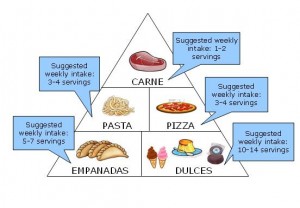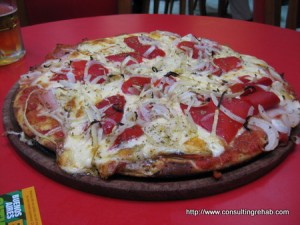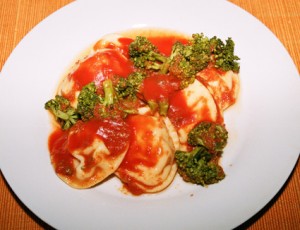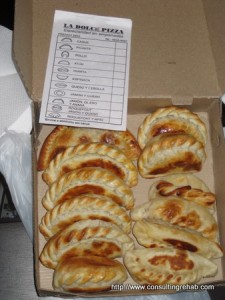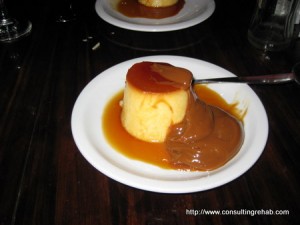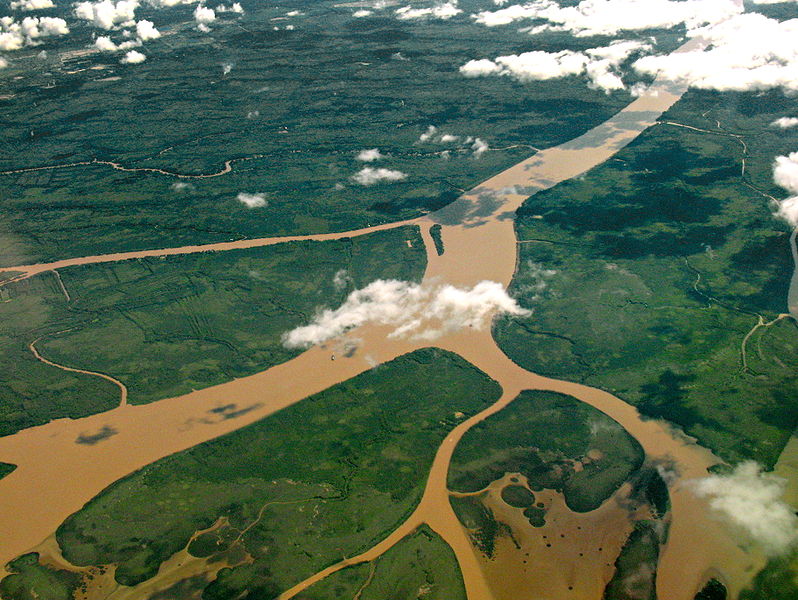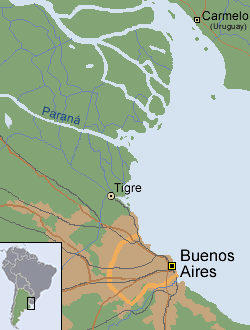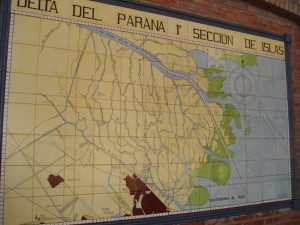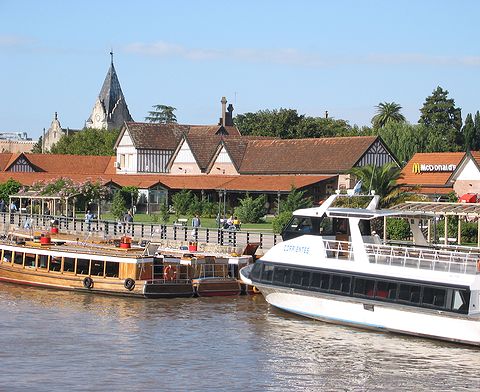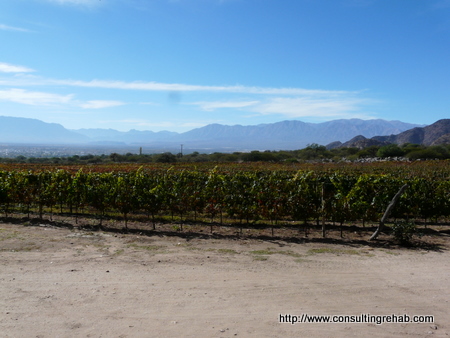In the US, we have a food pyramid with recommendations on what we should eat; it looks something like this:
In Argentina, they have a similar system, though it looks a little bit different. From what we can tell, this is a relatively accurate depiction:
People rave about the food in Argentina, especially the beef, and we agree. We absolutely loved the food when we first got here, but after 3 months, it’s gotten a little repetitive. Pretty much every day when we’re trying to decide what to eat, it comes down to a few options, which we have categorized into the 5 major food groups of Argentina:
- Carne. This one’s obvious (not to mention one of the reasons we came here). The steaks are spectacular, and we go out for a steak dinner at least once a week. More to come on some of our favorite spots to practice carnivourism, but we’ve already told you about our neighborhood gem El Estrebe.
- Pizza. As close to 60% of Argentina’s population is of Italian descent, pizza is big here. You can find a pizza place on nearly any block in the city. Our favorite pizza right now is either pepperoni or ham, covered with lots of cheese, fresh tomato slices and roasted red peppers. It looks something like this . . .
And tastes amazing. One odd thing that we’ve noticed here is that they almost always finish your pizza off with a couple of olives (usually green, but we got some black ones last time). It’s not necessarily listed as an ingredient in the pizza, but there it is nonetheless. Go figure.
- Pasta. Again, due to the Italian heritage, pasta is big here, especially fresh, stuffed pastas (e.g., ravioli, cannoli) – seems that they look down on dried pastas a bit, and actually list them separately on the menu. Our experience has been a bit hit-or-miss but generally good overall. If anything, the pastas can be a bit softer (think squishy, overcooked) that we’re used to back home. And there’s something going on with the olive oil here. Not sure exactly what, but it tastes (and smells) slightly chemical-y. We always just cross our fingers that the pasta we ordered is light on the oil.
- Empanadas. Best invention ever. Although the term isn’t the most appetizing, I think “meat pie” is actually the most accurate description. It’s a stuffed bread in a half-circle shape stuffed with a filling – beef or chicken are most common, but there are lots of varieties. As mentioned in other posts, this has become a staple meal for us, eaten at least once or twice a week. And they’re cheap – 40 pesos (~$10) buys a dozen that lasts for two meals. Not bad.
- Dulces. Dessert is its own food group in Argentina. We read somewhere early on in our time here that Argentines lead the world in their consumption of meat (obviously) and sweets. Sweets are available everywhere, and at all times of day – sweetened mini-crossaints for breakfast, dessert is included in most set lunches, more bakeries per capita than we’ve ever seen. They even have a special meal that’s basically just an opportunity to eat more dessert: merienda is the meal in Argentine eaten between lunch and dinner, most like an afternoon snack in the US. Understandable, since dinner is so late (10pm is common). The most popular things to eat for merienda are a coffee and a torta (cake) or other dulce. We’ll be writing more soon on our favorite dulces, but for now the most important thing to mention is dulce de leche. Made basically just from milk and sugar, it’s a thick caramel that’s eaten in every way you can imagine – stuffed between two cookies and covered in chocolate (alfahores), on top of flan or ice cream (helado), or on its own by the spoonful.
Basically, just about anything you could eat in Argentina will fall into one of the above categories. And the interesting thing is that almost every restaurant you visit will offer all 5 food groups! Even though you’re at what seems to be a pizza place, they probably still have steak on the menu. And the empanada place may offer pasta. But, that doesn’t mean you should order it. The key is learning what to order in each type of restaurant, which we’ve learned through several strategic ordering errors. Just because it’s on the menu doesn’t mean that they do it well, and it’s critical to learn quickly what to order (and what not to order).
Another thing we learned right away: Argentines don’t like spice (to the extent that you have to specifically ask for black pepper in most restaurants), which can lead to a lot of pretty bland food. But all in all, we think we’re pretty lucky with the food options here. We’ll continue our diligence and provide additional detail on each of the 5 food groups defined above, as well as our favorite restaurant picks in each category. But now, we’re off to dinner!


